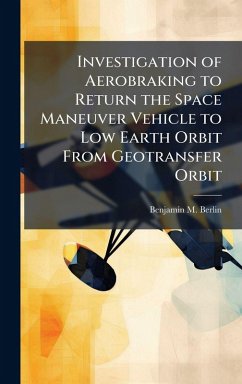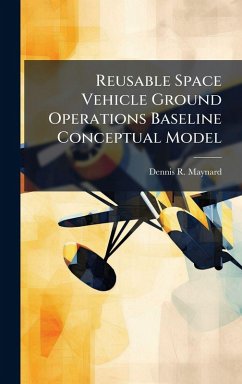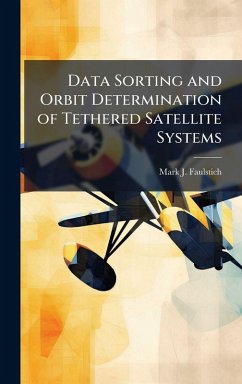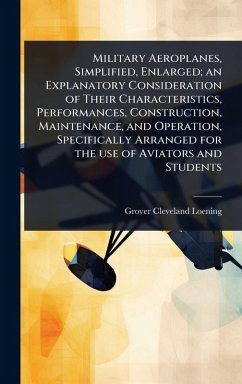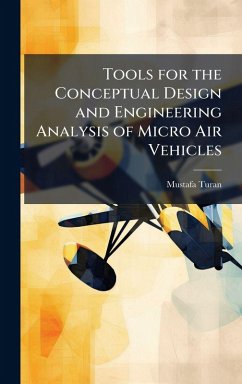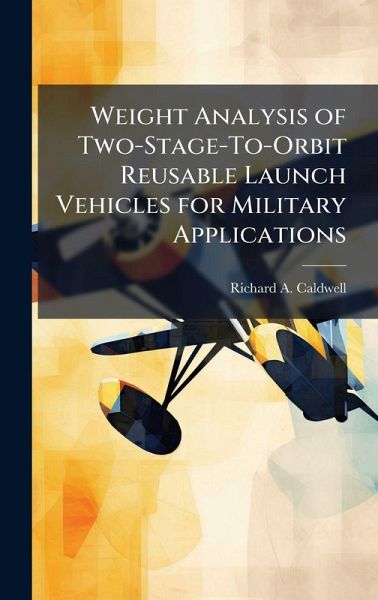
Weight Analysis of Two-Stage-To-Orbit Reusable Launch Vehicles for Military Applications
Versandkostenfrei!
Versandfertig in über 4 Wochen
29,99 €
inkl. MwSt.
Weitere Ausgaben:

PAYBACK Punkte
15 °P sammeln!
In response to Department of Defense (DoD) requirements for responsive and low-cost space access, this design study provides an objective empty weight analysis of potential reusable launch vehicle (RLV) configurations. Each two-stage-to-orbit (TSTO) RLV has a fixed payload requirement of 20,000 lbf to low Earth orbit. The propulsion systems considered in this study include pure rocket, pure turbine, rocket-based-combined-cycle (RBCC), and turbine-based-combined-cycle (TBCC). The hydrocarbon dual-mode scramjet (DMSJ) engines used in the RBCC and TBCC propulsion systems represent possible applic...
In response to Department of Defense (DoD) requirements for responsive and low-cost space access, this design study provides an objective empty weight analysis of potential reusable launch vehicle (RLV) configurations. Each two-stage-to-orbit (TSTO) RLV has a fixed payload requirement of 20,000 lbf to low Earth orbit. The propulsion systems considered in this study include pure rocket, pure turbine, rocket-based-combined-cycle (RBCC), and turbine-based-combined-cycle (TBCC). The hydrocarbon dual-mode scramjet (DMSJ) engines used in the RBCC and TBCC propulsion systems represent possible applications of the current research being performed in the U.S. Air Force HyTech program. Two sensitivity analyses were then performed on areas of interest directly affecting the propulsion systems in this study, including the effects of orbiter fuel selection, as well as the effects of increasing the turbine installed thrust to weight ratios for the RLVs utilizing afterburning turbine engines. The vertical-takeoff-horizontal-landing (VTHL) RLVs have an empty weight advantage over the horizontal-takeoff-horizontal-landing (HTHL) RLVs. The orbiter propellant switch has either negligible or no empty weight savings for the VTHL RLVs, while it leads to substantial empty weight savings for the HTHL RLVs. For the HTHL RLVs, increasing the turbine installed thrust to weight ratio causes a significant decrease in empty weight. This work has been selected by scholars as being culturally important, and is part of the knowledge base of civilization as we know it. This work was reproduced from the original artifact, and remains as true to the original work as possible. Therefore, you will see the original copyright references, library stamps (as most of these works have been housed in our most important libraries around the world), and other notations in the work. This work is in the public domain in the United States of America, and possibly other nations. Within the United States, you may freely copy and distribute this work, as no entity (individual or corporate) has a copyright on the body of the work. As a reproduction of a historical artifact, this work may contain missing or blurred pages, poor pictures, errant marks, etc. Scholars believe, and we concur, that this work is important enough to be preserved, reproduced, and made generally available to the public. We appreciate your support of the preservation process, and thank you for being an important part of keeping this knowledge alive and relevant.





